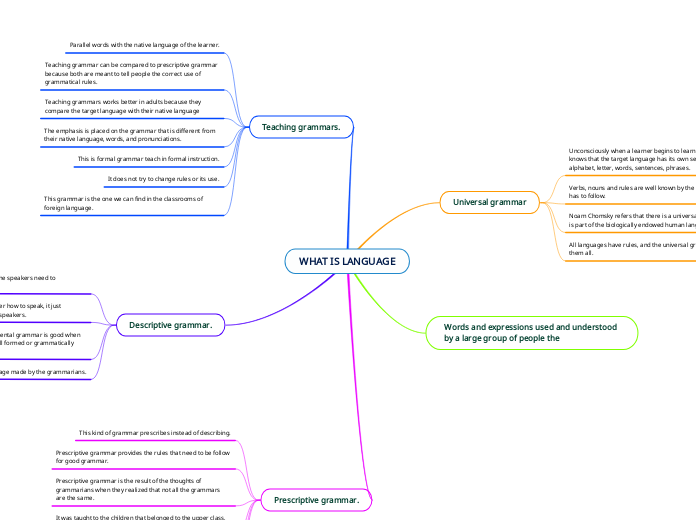WHAT IS LANGUAGE
Universal grammar
Unconsciously when a learner begins to learn a language he knows that the target language has its own set of sounds, alphabet, letter, words, sentences, phrases.
Verbs, nouns and rules are well known by the learner that he has to follow.
Noam Chomsky refers that there is a universal grammar which is part of the biologically endowed human language faculty.
All languages have rules, and the universal grammar is part of them all.
Words and expressions used and understood by a large group of people the
Teaching grammars.
Parallel words with the native language of the learner.
Teaching grammar can be compared to prescriptive grammar because both are meant to tell people the correct use of grammatical rules.
Teaching grammars works better in adults because they compare the target language with their native language
The emphasis is placed on the grammar that is different from their native language, words, and pronunciations.
This is formal grammar teach in formal instruction.
It does not try to change rules or its use.
This grammar is the one we can find in the classrooms of foreign language.
Descriptive grammar.
It also describes the rules that the speakers need to internalize.
It does not teach the rules neither how to speak, it just describes the knowledge of the speakers.
A speaker can realize that his mental grammar is good when he notices that a sentence is well formed or grammatically correct.
Description of language made by the grammarians.
Prescriptive grammar.
This kind of grammar prescribes instead of describing.
Prescriptive grammar provides the rules that need to be follow for good grammar.
Prescriptive grammar is the result of the thoughts of grammarians when they realized that not all the grammars are the same.
It was taught to the children that belonged to the upper class, they were taught how to write and speak properly.
It changes with the time because language is dynamic.
It is like the regulation of how your grammar should be.
